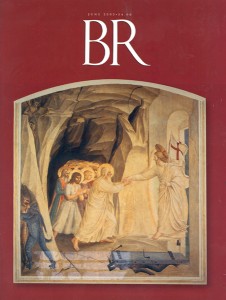Tomb of James Relocated—Miraculously!
Sidebar to: Where Was James Buried?

By the late second century A.D., James’s tomb, at the foot of the Temple Mount Wall, was buried in rubble. But that didn’t stop Christian pilgrims. A tradition soon arose that a much more easily accessible cave across the Kidron Valley was the true location of James’s tomb (the Bene Hezir tomb; photo above). The legend claims that, in the mid-fourth century A.D., James himself appeared in a vision to a poor hermit and pointed out the spot where he had been buried. The fallacious miracle story has legitimized the veneration of this cave as James’s tomb until modern times. From the entrance of the cave, visitors can look back at the Temple Mount wall, from which James was thrown.
The legend is recorded in a tenth-century A.D. Latin manuscript,1 but the story itself is much earlier; the church father Jerome knew of it in the late fourth century A.D. It is translated here for the first time into English by Jerome Murphy-O’Connor:
Already a library member? Log in here.
Institution user? Log in with your IP address.

